Functional Symptoms in Pediatric Disease: A Clinical Guide (2014)
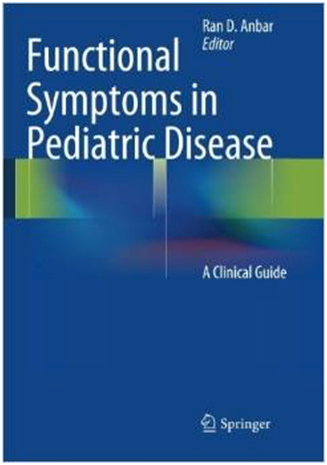
Many children with medical conditions fail to improve despite physicians’ best efforts. Sometimes, we ascribe this failure to lack of adherence to therapy or to the severity of the condition. What we often fail to appreciate, however is that sometimes the lack of improvement can be explained by the patients’ psychological states. The first section of Functional Symptoms in Pediatric Disease: A Clinical Guide teaches children’s health care providers to recognize functional symptoms that can complicate organic disease as well as symptoms that are believed to be purely functional in origin. Literature reviews, case studies and quizzes are provided in each chapter, with video demonstrations included in some of the chapters. The second section of the book will help clinicians differentiate the patients for whom referral to a mental health provider is mandatory from those for whom other approaches may be useful. For the latter group, the book teaches clinicians to empower themselves by learning how to incorporate various therapies for functional disorders into their practice, including biofeedback, basic cognitive behavioral therapy techniques, hypnosis, acupressure, yoga and meditation. Practical strategies for obtaining training in these modalities are provided in the appendix. Useful for practicing clinicians including pediatricians, family practitioners, pediatric subspecialists, child psychiatrists, psychologists, other mental health care providers and practitioners of alternative and complementary medicine, Functional Symptoms in Pediatric Disease: A Clinical Guide is an important new book that will help children’s health care providers consider the possible impact of functional contributions to the clinical presentation of their patients.
Conquering Your Child’s Chronic Pain: A Pediatrician’s Guide for Reclaiming a Normal Childhood (2015)
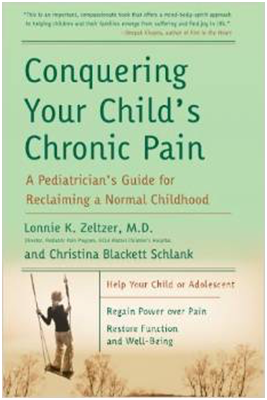
From a renowned expert in the field, a parent’s guide to managing their child’s chronic pain—to give back normal life to the 1 in 5 children for whom pain is a serious problem. A child’s chronic pain undermines school performance and social and emotional health, erodes finances, and devastates the family.
This book reveals what parents can do to alleviate their child’s pain on a daily basis. Dr. Zeltzer’s clinic is renowned for treatment of pediatric pain stemming from headaches, arthritis, irritable bowel syndrome; fibromyalgia, and more, via a multidisciplinary approach including specialists in psychiatry, hypnotherapy, yoga, acupuncture, biofeedback, and others. Based on more than 30 years study, Dr. Zeltzer offers ways to take control of the pain and ultimately become pain-free. She explains how to tell if the pain has become chronic, soothe the nervous system, reactivate the body’s natural pain control mechanisms, which medications are most effective, breathing, muscle relaxation and visualization techniques, how to reduce parents’ guilt and much more.
It is never too late to treat pain in children, no matter how long it has lasted, says Dr. Zeltzer. Her book offers help and hope to families desperately in need.
Oxford Textbook of Paediatric Pain (2013)

The Oxford Textbook of Paediatric Pain brings together an international team of experts to provide an authoritative and comprehensive textbook on all aspects of pain in infants, children and youth.
Divided into nine sections, the textbook analyses pain as a multifactorial problem to give the reader a comprehensive understanding of this challenging subject. Evidence-based chapters look in depth at topics ranging from the long-term effects of the pain in children, to complementary therapy in paediatric pain. Case examples and online materials including scales, worksheets, and videos are provided to aid learning and illustrate the application of knowledge.
Written by clinicians, educators, trainees and researchers, who were hand selected by the Editors for their practical approach and expertise in specific subject areas, The Oxford Textbook of Paediatric Pain will become the standard reference text in the assessment and treatment of patients and families in the field of paediatric pain.
Practical Treatment Options for Chronic Pain in Children and Adolescents: An Interdisciplinary Therapy Manual (2013)
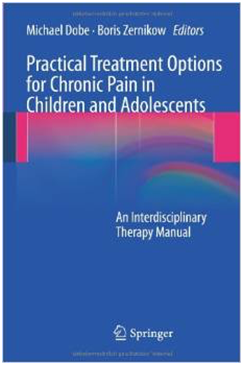
Pain is an increasingly common symptom in children and adolescents, and nearly 5% of the paediatric population now suffer from severe chronic pain conditions. This manual describes the inpatient treatment programme of one of the world’s largest treatment facility for chronic pain in children – The German Paediatric Pain Centre – and the guidance provided is also applicable to outpatient pain management. Epidemiology, aetiology, diagnostics and treatment principles are all examined in detail. Criteria for inpatient treatment are explained, and the structure and organisation of a treatment centre for chronic pain are described. Therapeutic interventions are presented with the aid of many examples of pain management and health care from clinical practice. Special features of pain therapy for children and adolescents suffering from comorbid mental disorders, family difficulties or physical complaints are also discussed.
Compact Clinical Guide to Infant and Child Pain Management: An Evidence-Based Approach for Nurses (2011)

“[This book] is a practical guide to pediatric pain assessment and management for the advanced practice nurse and primary caregivers who are interested in caring for patients with pain, but whose care specialty is not pain management. For the nurses whose specialty is pain management, this text provides a quick pediatric reference of our knowledge and tools of our trade. Even though it is a ‘compact guide,’ this text is well referenced with current key position statements, clinical practice guidelines, and primary references of the latest pediatric pain management research.”–Pain Management Nursing
Presented in a concise, systematic format, this clinically oriented book provides nurses and physicians quick access to up-to-date information on how to assess and manage pain in infants and children, including adolescents who suffer from acute and chronic pain conditions. This book provides a comprehensive review of medications for infants and children as well as nonpharmacological interventions to achieve optimal pain management for young patients undergoing needle-related procedures as well as painful conditions related to surgery, trauma, cancer, sickle cell disease, and chronic pain.
Key Features:
- Describes the consequences of untreated pain on development of children
- Summarizes pain assessment tools recommended for verbal and preverbal patients as well as those who are critically or terminally ill
- Provides general principles and specific dosing recommendations for non-opioids, opioids, and coanalgesics for optimal safety and effective reduction in pain
- Describes the indications, medications, and ongoing care and monitoring related to the increasing use of epidural and continuous peripheral nerve block infusions for pediatric patients
- Provides information on how to use age-appropriate strategies for cognitive, cognitive-behavioral, and physical approaches to reduce pain
Includes useful resources, such as websites, and other tools, such as pain diaries and patient education information, to support multidisciplinary teams and parents who care for children with acute and chronic pain
Handbook of Pediatric Chronic Pain: Current Science and Integrative Practice (2011)

The purpose of this text is to provide not only the science and current knowledge of pediatric pain management but a rationale for intervention. The book is ground-breaking in that it provides pearls for the recognition and management of multiple childhood chronic pain syndromes. Also, uncommon yet confounding issues such as pain management for epidermolysis bullosa are adequately addressed. Concerns unique to pediatric patients are reviewed. While there are no firm standards in pediatric chronic pain, a care plan is offered to help guide practitioners when possible.
The book will consist of 24 chapters, many co-written by a physician and a psychologist. Chapter 1 covers the history of pediatric chronic pain, the advancement pediatric pain as a clinical subspecialty, development of pediatric pain clinics, and characterization of the common pain syndromes. Chapters 2-4 cover, respectively, the research on early pain exposure and neuroplasticity, theories on the common adolescent pain syndromes, and the demographics of chronic pain in children. Chapters 5-16 discuss approaches to assessment and intervention for specific pediatric and adolescent pain syndromes. Chapters 17-23 address interventional techniques such as therapeutic blocks, neurablation, implantable systems, physical therapy, complementary therapy, and pharmacology including opioid tolerance. The final chapter discusses the role of the nurse practitioner in pediatric chronic pain.
Pain in Children (2008)

Advances over the past two decades have enabled physicians to revolutionize the manner in which they can assess and manage children’s pain. Thirty years ago it was thought that young children did not experience pain and therefore it was not necessary to treat it. Today professionals from a variety of disciplines have contributed data that have revolutionized medical perspectives. Technological advances now enable doctors to treat acute pain in fetuses, premature neonates, infants, toddlers, children, and adolescents with increasing precision and efficacy. Research highlighting the context of chronic pain has moved them away from a mind-body dichotomy and toward an integrated, holistic perspective that leads to substantial improvement in children’s adaptive functioning as well as subjective discomfort. This book covers these topics and is intended for anyone who provides medical care to children. Each chapter provides an overview of the problem, followed by a ‘hands on’ description of relevant assessment and intervention strategies. The role of the primary care practitioner is highlighted, both as a front-line resource as well as a consumer of specialized pediatric pain treatment services. Each chapter ends with a summary and specific bullet points highlighting the most central elements, making for quick and easy reference.
Neonatal Pain: Suffering, Pain, and Risk of Brain Damage in the Fetus and Newborn
(2008)
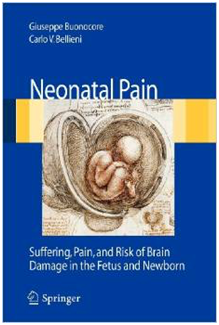
This is the first book dealing with fetal pain and its consequences and with pain in premature babies. The volume gives an overview of the current knowledge in this field. An international team of renowned specialists evaluates neonatal and fetal pain from the different points of view, and possible consequences of pain – even psychological – on the brain. This book will be an invaluable resource for professionals and for post-graduate students in all disciplines.
Pain in Neonates and Infants: Pain Research and Clinical Management Series, 3e (2007)
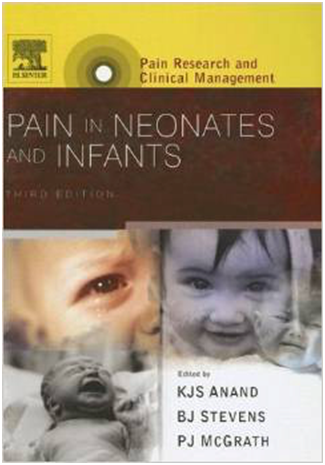
A new edition of a highly regarded text in the series on Pain Research and Clinical Management. The book is now used as a standard reference text for those working in the field of neonatology and paediatric pain assessment and management. It provides a comprehensive resource of the latest information in the field for use by both researchers and clinicians. The text is intended for use by all professionals working in the field: neonatologists; pediatricians; anestheiologists; nurses; psychologists.
- Multidisciplinary editorship and authorship ensuring relevancy and balance of content for all professional groups concerned.
- Clinically relevant and research based.
- Edited and written by the best known international names in the field.
- Covers pain management in infants up to 1 year of age as well as term and preterm neonates.
Includes new chapters on: Long-term consequences of neonatal pain from animal models; Pharmacogenetics and pharmacodynamics of analgesic drugs; Neuraxial and Regional Analgesia and Anesthesia; Fetal pain and surgery; Vulnerable Populations, Palliative Care; Infant Pain in the Home and Community, Developing Countries; Health Policy and Health Economics related to Infant Pain; Complementary and Alternative Approaches to Pain in Infancy; and Future Direct
Pediatric Pain Management for Primary Care (2004)
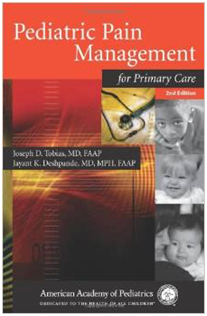
Practical, clinical guide to pediatric pain management and sedation includes 4 new chapters with new and expanded coverage of postoperative and acute pain management, chronic and cancer pain management, regional nerve blocks and interpleural analgesia, neonatal pain management, and sedation in the pediatric intensive care unit. The treatment of pain in infants and children is now recognized as key to insuring successful and quick recovery from illness, injury, and surgery. Also includes new, detailed diagrams demonstrating the nuances of treatment—an essential resource for effective, safe pain management.
Pain in Children: Nature, Assessment, and Treatment (1989)
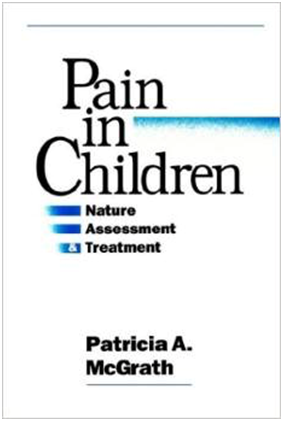
Interest in the assessment and management of children’s pain has increased dramatically over the past few years. Recent advances in the understanding of the plasticity and complexity of pain processing and new information about internal pain-inhibitory systems have revolutionized traditional approaches to pain control. It is now known that children’s pain is plastic–not simply and directly related to the nature and extent of tissue damage–and that there are many ways to alleviate their suffering. Using a multifaceted approach that encompasses the neural and psychological factors that mediate pain, and featuring specific examples drawn from the Pain Clinic at The Children’s Hospital of Western Ontario, this uniquely practical volume presents the most up-to-date information on how to assess and control acute, recurrent, and chronic pain in children.
In recognition of the multidimensional nature of children’s pain experiences, the book opens with a discussion of what pain is to children, the types of pain they experience, and the developmental, familial, situational, and emotional factors that modify children’s perceptions and behaviors. Physiological, behavioral and psychological pain measures and direct measures for evaluating pain in infants and children are described and evaluated. The complexity of the nociceptive system, which enables practitioners to alter children’s pain perceptions, is covered in detail, and information is provided about how to teach children and parents about pain modulation.
In the chapters that cover treatment, the primary pharmacological and non-pharmacological interventions for reducing pain are reviewed along with practical suggestions on how to select and use cognitive-behavioral techniques in ambulatory clinics and hospital settings. Separate chapters offer separate, in-depth discussions on the management of acute pain, recurrent pain syndromes (such as headaches, abdominal and limb pains), and chronic pain.
Drawn from the author’s experience as director of a multidisciplinary pain clinic for children, this straightforward volume, with its numerous case illustrations and research results, will be an invaluable resource to a all health professionals, particularly those in psychology, behavioral medicine, nursing and pediatrics. It also serves as an excellent text for students in these disciplines.
Headache
The Cleveland Clinic Manual of Headache Therapy: Second Edition(2014)
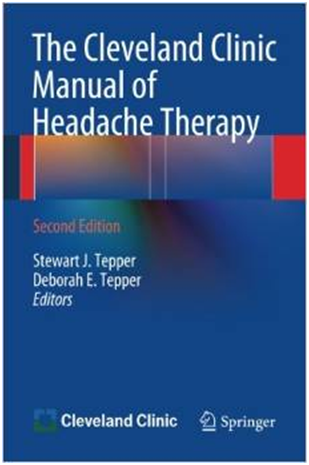
Since The Cleveland Clinic Manual of Headache Therapy published, new guidelines and therapies have emerged. The Cleveland Clinic Manual of Headache Therapy, 2nd Edition provides these advances, as well as a number of clinical challenges not covered in the 1st edition – including headaches associated with opioids and traumatic brain injury. Organized by dedicated parts and chapters on diagnosis and treatment, this practical guide also features clinical pearls and summarizing tables. The Cleveland Clinic Manual of Headache Therapy, 2nd Edition will provide neurologists, pain specialists, fellows, residents and primary care physicians an evidence-based resource of clinical approaches and appropriate treatments.
Case-Based Diagnosis and Management of Headache Disorders (2014)

This book provides the practicing physician with a practical approach to the diagnosis, evaluation and management of headache disorders based on lessons learned from real-life headache patients. Internationally well-known headache experts present cases from their own practice and discuss the evaluation and management of each case step by step. The clearly structured chapters cover initial evaluation and diagnostic work-up, imaging, differential diagnosis, interpretation of findings of further work-up, treatment options and response and key points. A wide spectrum of headache types is covered, including both primary and secondary headache disorders. The reader will learn how to diagnose and manage different headache disorders directly from the clinical experience of experts. Case-Based Diagnosis and Management of Headache Disorders will be of value for neurologists and a wide range of physicians – from those in other specialties to primary care givers.
Acupuncture
Acupuncture for Pain Management (2014)
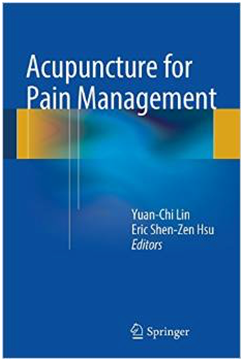
Acupuncture for Pain Management is intended as the premier resource for learning the fundamentals of the art of medical acupuncture. Edited by top pain medicine specialists at Harvard and UCLA, and based on their popular annual workshop at the American Society for Anesthesiologists, the book is the perfect synthesis of Western and Chinese medicine. Anesthesiologists, pain medicine specialists, primary care physicians, osteopaths, neurologists, psychiatrists, physical medicine and rehabilitation specialists, and other health professionals looking to add acupuncture to their repertoire will benefit from the concise and practical approach of the book.
Features:
- Each individual meridian discussed in detail
- Acupuncture for 25 clinical conditions, including headache, menstrual pain, low back pain, insomnia, and more
Aimed at acupuncturists as well as practitioners who want to add acupuncture to their clinical armamentarium
Abdominal Pain
Chronic Abdominal Pain: An Evidence-Based, Comprehensive Guide to Clinical Management (2014)

Chronic Abdominal Pain is a comprehensive resource focused on the management of chronic abdominal pain. Chapters begin with an overview of pain generation, adaptive mechanisms and various diagnostic approaches. A complete range of novel, conservative, minimally invasive and surgical therapeutic options and their proper selection are then discussed along with evidence-based and practical clinical aspects of patient care. Authored by a team of world-renowned physicians and researchers, this definitive guide provides novel algorithms for contemporary treatment of chronic abdominal pain, giving pain medicine clinicians and practitioners the knowledge needed to assess and treat patients with abdominal pain.
Chronic Abdominal and Visceral Pain: Theory and Practice (2006)
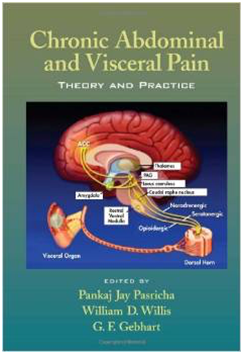
Standing alone as the first definitive and comprehensive book on the subject, this guide describes the most recent studies on the brain-gut connection and psychosocial issues related to patients experiencing visceral pain. Bringing together leading experts from the top-tiers of the science, this source provides 33 engaging chapters and spans basic concepts in pharmacology, neurobiology, physiology, and psychology to provide a practical approach to the treatment of chronic pain.
Examining a condition that affects up to 25% of the general U.S. population, this source is the only book on the subject to cover both clinical syndromes and neurobiology…ranges from basic mechanisms to diagnosis and clinical treatment of specific syndromes including inflammatory bowel disease, functional abdominal pain, dyspepsia, non-cardiac chest pain, and pelvic pain syndromes…analyzes the latest scientific advances including the role of functional imaging in patient care…integrates fundamental scientific concepts with a practical clinical approach…and supplies 250 figures, and more than 16 color photographs.
Chronic Postsurgical Pain (2014)
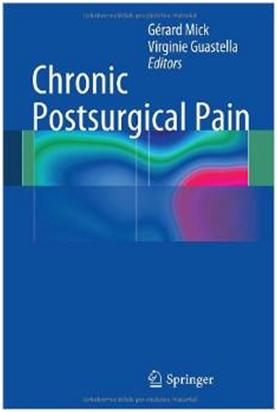
Primum non nocere… The fact that a surgical procedure can leave any kind of pain casts a shadow over this tenet, which is seen as the basis of medical practice and anchor of its principle ethic…
It is all the more surprising in that medicine has only paid attention to this paradoxical chronic pain situation for the past few years. Clarifying the knowledge acquired in this field has become all the more urgent for any care-giver today confronted by a legitimate request from patients: Why and how can a surgical procedure, which is supposed to bring relief, leave behind an unacceptable sequela?
This is the approach which the contributors to this new subject of major clinical interest invite you to follow as you work your way through this book.
Pelvic Pain
Chronic Pelvic Pain and Dysfunction: Practical Physical Medicine, 1e (2012)
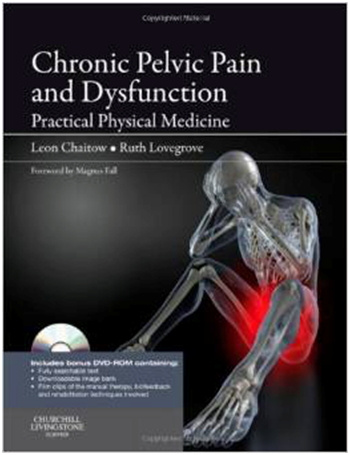
Edited by Leon Chaitow and Ruth Lovegrove, this clearly written and fully illustrated multi-contributor volume offers practical, comprehensive coverage of the subject area accompanied by a range of video clips. Covering all aspects of current diagnosis and management, this new book is suitable for physiotherapists, osteopathic physicians and osteopaths, medical pain specialists, urologists, urogynaecologists, chiropractors, manual therapists, acupuncturists, massage therapists and naturopaths worldwide.
- Offers practical, validated, and clinically relevant information to all practitioners and therapists working in the field
- Edited by two acknowledged experts in the field of pelvic pain to complement each other’s approach and understanding of the disorders involved
- Carefully prepared by a global team of clinically active and research oriented contributors to provide helpful and clinically relevant information
- Abundant use of pull-out boxes, line artwork, photographs and tables facilitates ease of understanding
- Contains an abundance of clinical cases to ensure full understanding of the topics explored
- Focuses on the need for an integrated approach to patient care
- Includes an appendix based on recent European Guidelines regarding the nature of the condition(s) and of the multiple aetiological and therapeutic models associated with them
- Contains a bonus DVD presenting film clips of the manual therapy, biofeedback and rehabilitation techniques involved
Integrative Pain Medicine
Integrative Pain Medicine: The Science and Practice of Complementary and Alternative Medicine in Pain Management (Contemporary Pain Medicine) (2008)
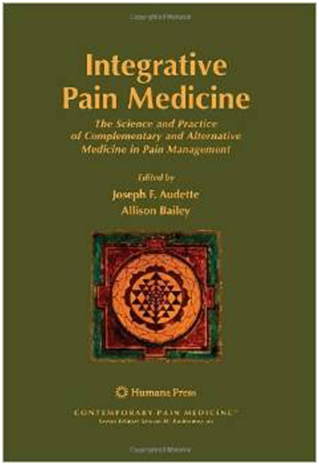
This important book fills a need in the developing area of Pain Medicine. It provides physicians with an up-to-date resource that details the current understanding about the basic science underlying the mechanism of action of the various CAM therapies used for pain. It summarizes the clinical evidence both for efficacy and safety, and finishes with practical guidelines about how such treatments could be successfully and safely integrated into a Pain practice.
Interventional Pain Management
Atlas of Interventional Pain Management, 4e (2014)

Arranged by anatomic region, Atlas of Interventional Pain Management provides pain medicine specialists in practice and in training with the most up-to-date and practical guide to over 160 interventional pain management techniques. High-quality photographs, procedural videos, and 19 brand-new chapters combine to offer the detailed guidance you need to implement safe, effective treatments and achieve the best possible outcomes in Pain Medicine.
- Maximize your success rate and reduce complications with CPT codes for each procedure, as well as indications, relevant anatomy, technique, side effects and complications, and clinical pearls.
- Integrate interventional techniques into your practice with lavish, detailed illustrations that highlight the key steps in each procedure.
- View line drawings paired with CT, MR and/or radiographic images to illustrate relevant points in the text.
- Stay current on the latest injection techniques with 19 brand-new chapters including: Brachial Plexus Block – Infraclavicular Approach; Transverse Abdominis Plane Block; Anterior Cutaneous Nerve Block; Lumbar Grey Ramus Communicans Block; Lumbar Grey Ramus Communicans Block – Radiofrequency Lesioning; and more.
- Expand the breadth of procedures you performby focusing on the “how” rather than the “why” of various pain-relieving techniques.
- Increase needle-placement precision and find the exact location to deliver the nerve block with significantly expanded fluoroscopy- and ultrasound-guided content.
- Visualize proper needle placement with help from an increased number of high-quality photographs.
- Understand how techniques are performed by watching procedural videos that cover Cervical Translaminar Epidural Block; Cervical Paravertebral Medical Branch Block; Percutaneous Facet Fusion; Lumbar Transforaminal Epidural Block; and more.
- View online-only chapters accessible via Expert Consult, as well as additional online-only figures, key terms, and abstract sections.
Expert Consult eBook version included with purchase. This enhanced eBook experience allows you to search all of the text, figures, references, and videos from the book on a variety of devices.
Atlas of Image-Guided Intervention in Regional Anesthesia and Pain Medicine (2011)
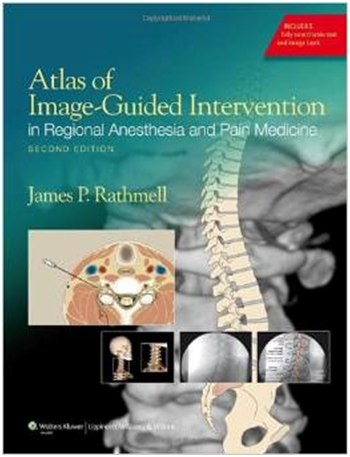
The Atlas of Image-Guided Intervention in Regional Anesthesia and Pain Medicine is a practical guide for practitioners who perform interventional procedures with radiographic guidance to alleviate acute or chronic pain. The author provides an overview of each technique, with detailed full-color illustrations of the relevant anatomy, technical aspects of each treatment, and a description of potential complications. For this revised and expanded Second Edition, the author also discusses indications for each technique, as well as medical evidence on the technique’s applicability. The new edition features original drawings by a noted medical artist and for the first time includes three-dimensional CT images that correlate with the radiographic images and illustrations for a fuller understanding of the relevant anatomy.
Atlas of Image-Guided Spinal Procedures, 1e (2012)
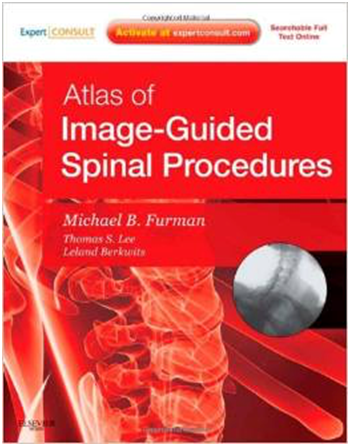
Give your patients the non-surgical pain relief they need with help from the Atlas of Image-Guided Spinal Procedures. This medical reference book features a highly visual format that shows you exactly how to perform each technique to get the best results.
Give your patients the pain relief they need with the latest image-guided spinal injection procedures! A highly visual format shows you exactly how to perform each technique.
- Safely and efficiently relieve your patients’ pain thanks to an atlas format that displays each procedure step-by-step.
- See properly performed injections for yourself with an algorithmic,image-guided approach for each technique: trajectory view (demonstrates fluoroscopic “set up”); multi-planar confirmation views (AP, lateral, oblique); and “safety view” (what should be avoided during injection), along with optimal and suboptimal contrast patterns.
- Special chapters on Needle Techniques, Fluoroscopic Imaging Pearls, Radiation Safety, and L5-S1 Disc Access provide additional visual instruction.
- View drawings of radiopaque landmarks and key radiolucent anatomy that cannot be viewed fluoroscopically.
- Access the full text and downloadable image bank anytime, anywhere, at expertconsult.com.
Provide optimal outcomes for patients with back pain using fluoroscopically-guided, injection-based spinal procedures
Trigger Points
Myofascial Trigger Points: Comprehensive diagnosis and treatment (2013)

Pain and limited function of the locomotor system are the most common reasons for visiting a doctor or therapist. Muscles play a key part in these presentations as a result of their function and anatomy with current research suggesting that muscle imbalance, muscle tension and painful functional disorders are at the forefront when it comes to acute or chronic symptoms. The clinical correlate with all such symptoms is the myofascial trigger point.
Myofascial Trigger Points: Comprehensive Diagnosis and Treatment examines all aspects of muscle physiology and the pathogenesis of myofascial pain. The book provides valuable advice on diagnosis and differential diagnosis and contains detailed, practice-oriented information and numerous illustrations of the various therapeutic procedures for the treatment of myofascial trigger points.
Prepared by experts from throughout the world, Myofascial Trigger Points: Comprehensive Diagnosis and Treatment will be ideal for all manual therapists, physiotherapists, osteopathic physicians, osteopaths, chiropractors, acupuncturists, massage therapists and naturopaths.
- Offers practical and clinically relevant information to all practitioners and therapists working in the field
- Edited by an international expert in pain management and trigger point therapy
- Abundant use of pull-out boxes, line artwork, photographs and tables facilitates ease of understanding
- Carefully prepared by a worldwide team of clinically active and research oriented contributors to provide helpful and clinically relevant information
- Presents the latest research findings for many aspects of trigger point therapy
- Provides a holistic view of patient care including the importance of patient communication and psychological aspects of pain control
- Provides a handy reference for rapid and effective diagnosis and treatment of trigger points
- Highlights the 65 most important muscles in a comprehensive practical style which includes anatomy, symptoms, pain patterns, physical examination and strategies for effective treatment
- Offers an ideal resource for training courses in trigger point injection, osteopathy, manual therapy and acupuncture
Suitable for osteopathic physicians, osteopaths, chiropractors, manual therapists, acupuncturists and massage therapists as well as general physicians working in primary care, physical medicine, rehabilitation, pain management and internal medicine
The Concise Book of Trigger Points(2008)
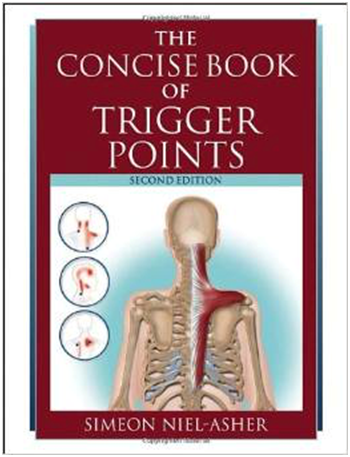
Most muscular aches and pains are caused or affected by untreated “trigger points,” localized tender spots in muscles. Understanding and treating these points can lead to rapid and lasting pain relief. Trigger point therapy is a powerful tool in the management of both acute and chronic pain, including such common problems as headaches, TMJ syndrome, and back pain.
Written in a straightforward style, The Concise Book of Trigger Points is designed for the student and practitioner of massage/bodywork, physical therapy, physiotherapy, osteopathy, sports therapy, and any other health-related field. It functions both as an entry-level textbook and an authoritative reference for even the most experienced therapist. The first four chapters describe the physiology of trigger points and the general methods of treatment. The following six chapters are organized by muscle groups; each two-page spread features detailed color illustrations of each major skeletal muscle, accompanied by an explanation of each muscle’s origin, insertion, action, and function. The physiological implications of the trigger points in each muscle are discussed, along with treatment techniques. This edition contains updated text and a self-help section addressing common pain complaints, including headache, neck pain, shoulder pain, lower back pain, and TMJ syndrome.
Trigger Point Therapy for Myofascial Pain: The Practice of Informed Touch (2005)
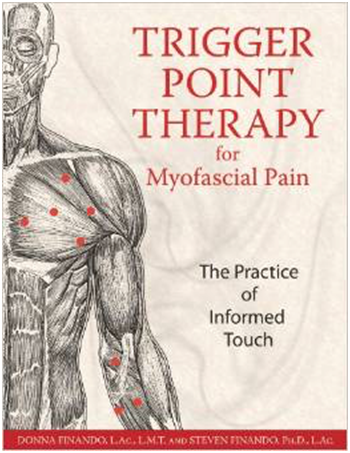
A clinical reference manual for the evaluation and treatment of muscle pain
• Contains detailed illustrations of pain patterns and trigger-point locations
Myofascial pain syndromes are among the fastest growing problems that physicians, osteopaths, acupuncturists, and physical, occupational, and massage therapists encounter in their patients. In Trigger Point Therapy for Myofascial Pain Donna and Steven Finando have organized vast amounts of information on treating myofascial pain into an accessible “user’s manual” for healthcare practitioners. They examine a wide range of pain patterns and present evaluation and palpation techniques for reducing trigger points–and thereby alleviating pain–in the most clinically significant musculature of the body.
This comprehensive yet easy-to-use reference guide to treatment of muscle pain begins with chapters on the concept of Qi and its relationship to myology, specific trigger point location and activation, and palpatory skill-building techniques. Subsequent sections provide detailed information on each muscle to teach clinicians to locate quickly and accurately individual points of pain and compensation. A visual index allows easy identification of the muscles that may be involved. Trigger Point Therapy for Myofascial Pain provides necessary and invaluable information for sufferers and any professional involved with myofascial disorders.
Regional Anesthesia
Textbook of Regional Anesthesia and Acute Pain Management – Hadzic, Textbook of Regional Anesthesia and Acute Pain Management (2006)
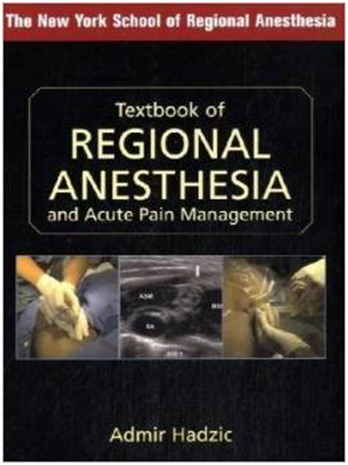
“This is an enormous book. It weighs in at just under eight and a half pounds with a list price that makes it comparable to an equal quantity of sushi grade tuna! It is a beautiful and powerful text/reference book. The composition corresponds particularly well with the subject. The wealth of detail, the high quality photos and drawings, the well composed text, and the engaging layout are enticing. Handling and reading such an exceptional book brings great pleasure. Forget the fish. Buy the book.”–Doody’s Review Service
Here at last is a reference that covers the practice of Regional Anesthesia in its entirety, providing practitioners and students with both the physiologic principles and specific, state-of-the-art patient-management protocols and techniques.
Recognized leaders in the specialty have filled this richly illustrated volume with authoritative, completely practical help. You’ll find algorithms for managing or avoiding a wide range of common clinical dilemmas or complications. You’ll get time-saving tools such as intravenous-to-oral opioid conversion tables and PCA setup guides as well as no-nonsense selection of nerve block techniques and advice on their strengths and pitfalls. This handy reference helps you make wise choices about anesthetics, dosing intervals, equipment, and perioperative management of patients receiving single-injection or continuous nerve blocks or spinal or epidural anesthesia. It tells you how to successfully manage patients with suspected epidural hematoma or neurologic injuries — and much more.
- Filled with full-color, high-quality, detailed illustrations and clinical images of actual patients
- Covers the entire field of regional anesthesia, including nerve stimulator and ultrasound-guided peripheral nerve blocks, from imaging and instrumentation to step-by-step instructions for employing them in adults and children
- Details how to achieve reliable anesthesia and analgesia for surgical interventions on the face and upper and lower extremities
- Provides information on the advantages and disadvantages of using regional anesthesia in patients with coexisting diseases
- Offers guidance on acute pain management of adults and children in the perioperative period and in the ER
Features up-to-date information on the etiology, prevention, and management of a wide range of complications
Ultrasound Guided Regional Anesthesia (2012)

Ultrasound technology is enabling anesthesiologists to perform regional anesthetic procedures with greater confidence in accuracy and precision. With improvements in visualizing neural anatomy and needle movement, ultrasound guidance improves patient safety and operating room efficiency. This book offers a detailed, stepwise approach to this technique, identifying pearls and pitfalls to ensure success. Chapters are organized into four sections. The first section provides the basic principles behind ultrasound guided regional anesthesia, setting a strong context for the rest of the book. The last three cover the nerve blocks: upper limb, lower limb, and trunk and spine. Each nerve block is comprehensively explained, divided up by introduction, anatomy, clinical applications, technique, alternate techniques, complications, and pearls. This book provides authoritative, in-depth coverage of ultrasound guided regional anesthesia for the anesthesiologist beginning to use ultrasound and makes a great reference for the more seasoned.
Atlas of Ultrasound-Guided Regional Anesthesia: Expert Consult – Online and Print, 2e (2012)
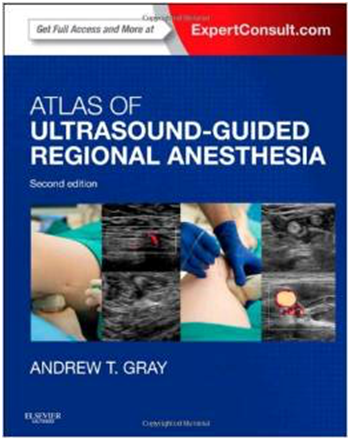
Safely and effectively perform regional nerve blocks with Atlas of Ultrasound-Guided Regional Anesthesia, 2nd Edition. Using a wealth of step-by-step videos and images, Dr. Andrew T. Gray shows you how to use the latest methods to improve the success rate of these techniques.
“Having read this book, I can understand the enthusiasm that many of my colleagues have for the use of ultrasound and how this also greatly improves one’s knowledge of surrounding anatomy and confidence when performing any type of regional anaesthetic block. I can now be regarded as a ‘convert’ to the great value that ultrasound provides” Reviewed by: British Journal of Anaesthesia Date: 2014
- Master essential techniques through step-by-step videos demonstrating paravertebral block, transversus abdominis block, psoas nerve block, subgluteal nerve block, and more.
- Test your knowledge and prepare for the ABA exam with board-style review questions.
- Ensure correct needle placement with numerous 3-D and long-axis views that clearly depict surrounding structures.
- Update your skills with completely rewritten chapters on Infraclavicular, Neuraxial, and Cervical Plexus Blocks as well as entirely new chapters on Fascia Iliaca, Anterior Sciatic, Transversus Abdominis Plane (TAP), and Stellate Ganglion Blocks.
- Review a full range of nerve block techniques in an easy-to-follow, step-by-step manner using new quick-reference summary tables.
View author-narrated videos and access the complete contents online at www.expertconsult.com; assess your knowledge with the aid of a new “turn labels off” feature for each image.
Ultrasound-Guided Regional Anesthesia in Children (2015)
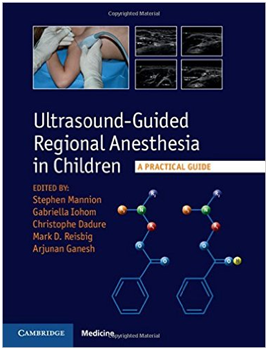
Ultrasound has revolutionized the practice of regional anesthesia, yet there remains a paucity of good resources on ultrasound-guided regional anesthesia in children. This book offers a much-needed practical guide to all the major ultrasound-guided blocks in pediatric patients, including neuraxial, truncal, upper and lower limb blocks. The core principles of good clinical practice in regional anesthesia are described and discussed, including the pharmacology of local anesthetics in children, the performance of regional anesthesia, the management of complications, and the clinical anatomy of each block. Every block chapter provides both a “how to” section and also a comprehensive literature review, with an up-to-date and relevant bibliography for reference and further reading. Chapters are illustrated with unique anatomical images and detailed descriptions. Both trainee and experienced anesthesiologists will find this an essential resource for the safe and effective performance of modern regional anesthesia in children.
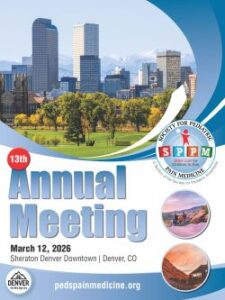 SPPM 13th Annual Meeting
SPPM 13th Annual Meeting